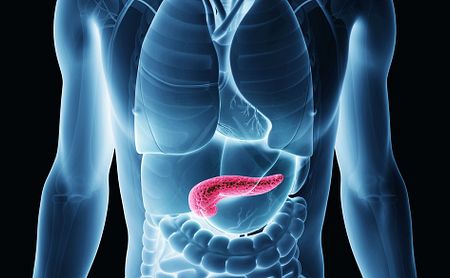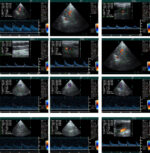Ultrasounds May Help Diagnose Pancreatic Insufficiency in Children

xsense/Shutterstock
A non-invasive ultrasound imaging technique may be able to detect changes in the pancreas of children with cystic fibrosis (CF) and aid in an early diagnosis of exocrine pancreatic insufficiency, or EPI — which occurs when the pancreas doesn’t make enough digestive enzymes — a Turkish study suggests.
The method, called point shear wave elastography, is both easy to perform and not expensive, according to scientists.
It could help improve patients’ outcomes, they said, noting that EPI can lead to malnutrition and diabetes.
The study, “Evaluation of Children and Adolescent with Cystic Fibrosis by Pancreatic Elastography,” was published in the journal Pediatrics International.
In people with CF, thick mucus accumulates in multiple organs, including the pancreas, which becomes inflamed and can be painful. This mucus also blocks the release of enzymes needed to properly digest food, particularly fats, resulting in EPI.
The pancreas is functionally divided into exocrine and endocrine — exocrine refers to making digestive enzymes, whereas endocrine refers to producing and releasing hormones like insulin into the bloodstream.
In CF, pancreatic insufficiency starts very early, being detected in about 40–50% of newborns with the disease, and in 85 to 90% by the age of 1. Diabetes also can develop over time, the result of impairments in the endocrine pancreas functions.
While pancreatic endocrine insufficiency is relatively easy to diagnose, there is no clear test to diagnose EPI. Assessing the body’s fat absorption by measuring stool fat is currently the gold standard test for EPI. However, the procedure is demanding for both patients and labs.
Point shear wave elastography, or pSWE, is an ultrasound-based method that’s used for the non-invasive quantification of tissue elasticity and stiffness. While used in several organs, few studies have assessed its potential to study pancreatic involvement in children and adults with CF.
In pSWE, the softening of tissue, as a result of an accumulation of fat, leads to a decrease in scores generated by this ultrasound technique.
In this study, researchers at the Dicle University School of Medicine, in Turkey, evaluated the pancreases of children with CF using pSWE and compared the results with those of healthy children to assess whether this imaging technique could help diagnose EPI.
A total of 55 children with CF — 24 girls and 31 boys — with a mean age of 9 were included in the study, along with 60 healthy children who served as controls. There were 29 girls and 31 boys in the control group, who had a mean age of 7.7. More than half (58%) of those with CF had low body mass index, or BMI, a measure of body fat.
The mean value of pSWE was 1.12 in the healthy group and 0.97 among those with CF, a statistically significant difference, according to researchers.
In the CF group, lower values of pSWE correlated with older age, greater height, glucose levels in the blood, and disease duration.
Further analysis revealed that disease duration was the only independent factor associated with pSWE scores, as having the disease for a longer time was linked with lower pSWE.
In healthy children, a higher pSWE score was associated with older age.
Overall, these results suggest that this ultrasound imaging technique is able to detect changes in the pancreas of children with CF and could help diagnose EPI earlier, the investigators said.
These findings are important given that life expectancy for people diagnosed with CF has “increased significantly in the last decade,” the team said.
“Investigating pancreatic elasticity and detecting pancreatic insufficiency using pSWE (a simple, inexpensive, and non- invasive method) in the early period before overt laboratory and clinical symptoms of EPI can positively contribute to long-term results in young patients with CF,” they concluded.
As to study limitations, they included the small sample size and the lack of confirmation of EPI by other methods.









